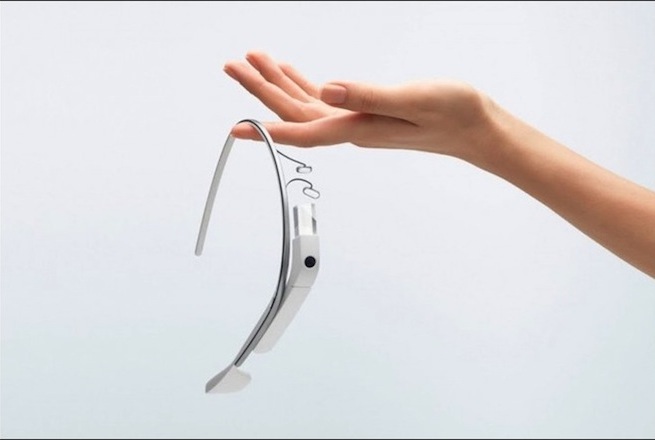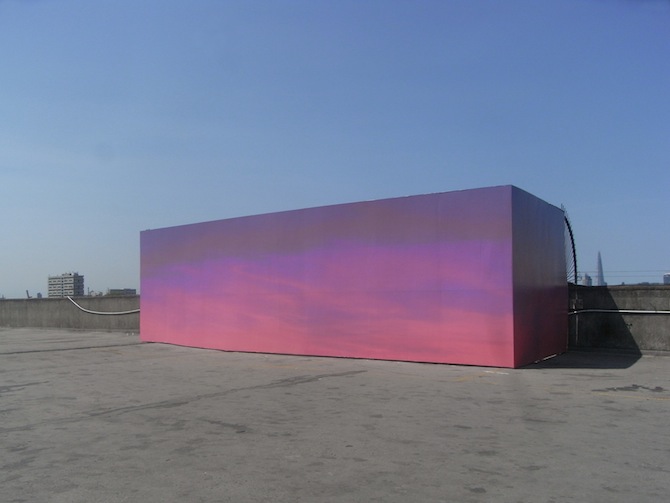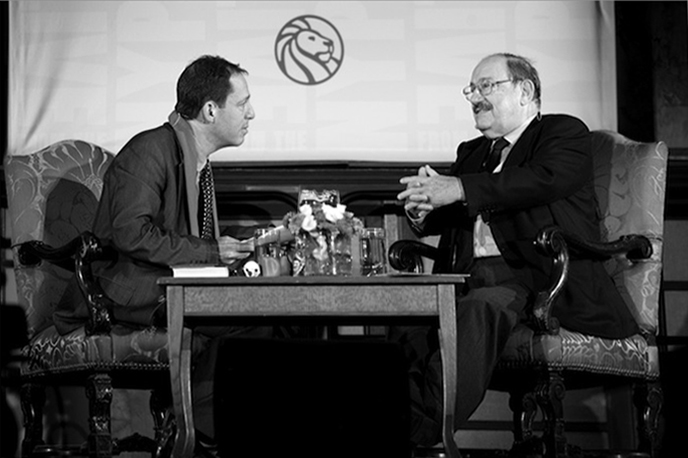BLOG
FOLLOW
KALEIDOSCOPE X MISSONI
October 3 2013
6:48 PM
KALEIDOSCOPE is delighted to announce a new collaboration with defining Italian fashion brand Missoni, on the occasion of the launch of their renovated website and its new online journal – Missoni Moments, a web magazine published in collaboration with bloggers, photographers, illustrators, artists and video makers, including a column on contemporary art edited by KALEIDOSCOPE.
Divided in five theme sections – Stories, Visions, Making Magic, Nowon, Theplacetobe, constantly connected to the brand’s social channels of Instagram and Twitter – the new website talks about fashion, people, friends, art, creativity and lifestyle, with a new “handmade” look that evokes the stylistic essence of Missoni.
The kick-off posts contributed by KALEIDOSCOPE’s Editor-in-Chief, Alessio Ascari, including a homage to irreverent, iconoclast Italian artist Enrico Baj, are now online. Stay tuned!
Photo by Studio Parvulescu, Berlin
FOLLOW
“D” from ZWEIDREI
to www.deeeee.de
September 25 2013
4:02 PM
ZWEIDREI is a multidisciplinary group of collaborators who deal with media-architecture and design, hosting various projects and collaborations. To coincide with abc art berlin contemporary, Zwei Drei demonstrated their capacity to act as producers of a gallery show and an online continuation of the curated exhibition—“D.” The show has been developed by Adriana Blidaru, Anna Frost, Ché Zara Blomfield, Elena Gilbert and James Michael Shaeffer, Jr. “D” explored the evolution of a conventional group show into a performative venture by featuring a range of artists working in different mediums, touching on topics such as process, transformation and advancement, examined through assemblages, ensembles and tableaux. Brent Wadden and Michiel Ceulers presented their intrinsic and frenzied approach to installation and painting, respectively, which is contrasted with the digital practice followed by Petra Cortright’s digital paintings and Harm Van Den Dorpel‘s Plexiglas sculptures. Objects were transformed in a new process of assemblage under the direction of Kate Steciw and Aleksandra Domanović. In line with the themes of advancement and transformation, the show continues online through a specially created website by artist Harm van den Dorpel – www.dissociations.com. The website provides documentation of the exhibited artist’s works in a different setting, specifically their studios. This online ‘follow-up” of the show aims to provide an extra platform—alongside an exhibition catalogue— for viewers to critically engage with the works selected for this group show. (Tatevik Sargsyan)

FOLLOW
Google Glass
September 4 2013
4:03 PM
Headlines run one after another in every newspaper, magazine and blog worldwide: A month after Google’s co-founder Sergey Brin made a public appearance wearing a prototype in April 2012, engineer Babak Parviz announced the official launch at the Google I/O, the annual developer-focused conference held by the Internet company in San Francisco. Over the course of the same spring, two consecutive first-person demo videos, “A day” and “How it Feels,” were released and went viral, and designer Diane von Fürstenberg had her models walk down the runway with the futuristic eyewear at the New York Fashion Week. Finally, last February, the Explorer Edition of the Google Glass was made available to a limited number of testers and developers, leading to rumors that a consumer version is expected to hit the market within early 2014. A wearable computer with a head-mounted display, this innovative augmented-reality device is designed to integrate (and bring a new type of experience to) daily-basis functions such as video recording, photo camera, social networking, messages, google search, maps and navigation—all to be activated by a simple voice command, which is already a motto: “Ok, Glass.” With all the sci-fi references and implications, from Star Trek to Strange Days, we can’t wait to see how this will impact on people’s lives and, well, post-internet artistic practices. (Cristina Travaglini)

Courtesy of Bold Tendencies; © Cécile B. Evans
FOLLOW
Bold Tendencies
August 28 2013
3:14 PM
Summer has finally arrived in London, and like every year, the top four floors of a disused multi-story car park in Peckham hosts one of the most dynamic and engaging events in London. In addition to an exhibition of newly commissioned site-specific works, Bold Tendencies offers a varied programme of performances, screenings, workshops, concerts and talks reflecting on the research of young artists. Besides that, what distinguishes Bold Tendencies from other projects in London this summer is its ability to activate a community. Peckham is one of the most animated and colorful districts south of the Thames; cultural and social mixes are the main features of its streets crowded with African hair salons, markets and art students. Bold Tendencies joins these realities and integrates them in a common cultural and spatial environment. Indeed, the most interesting projects are about collectivity, community and collaboration. On the roof, Jimmy Merris uses a second-hand Mercedes as a relational space where you can drink a beer with some friends and listen to a selection of African music. In a collaborative project Matthew Drage aims to lay down the foundations for a new religion. On the 6th of September, Hannah Perry will present HAND (Have A Nice Day), a video and performance realized in collaboration with invited artists and bubblebyte.org through a series of workshops with teenagers from South East London. (Guido Santandrea)
Bold Tendencies will run at Peckham’s multi-storey car park, London, through September 30.

Photo by Jori Klein
FOLLOW
LIVE!
from the NY Public Library
August 14 2013
3:00 PM
Considering its association with imposing marble buildings and iconic lion statues, the New York Public Library might not seem the most likely candidate for multimedia programming. Yet in the spirit of pushing the library from the 19th century far into the 21st, in 2008 Paul Holdengräber enacted a program of interviews, also available as free podcasts, with some of the leading literary, philosophical and artistic giants of our time, including Jonathan Franzen, Don DeLillo, Rick Rubin, Umberto Eco, Slavoj Zizek and Ed Ruscha, as well as unlikely interdisciplinary pairings such as Jay-Z and Princeton professor Cornel West. A self-proclaimed “curator of the public curiosity,” Holdengräber’s eclectic background has been put to good use. After traveling throughout Europe as a teenager, he landed in Paris where he studied under legendary poststructuralist thinkers like Roland Barthes and Michel Foucault before completing a Phd in comparative literature at Princeton. From there he ended up at the Los Angeles County Museum of Art, where he founded the Institute for Art and Cultures. Asked to join the New York Public Library by former President Paul LeClerc, who tasked Holdengräber to “oxygenate the library,” he seems to be doing just that. Disseminating innovative cross-cultural programming through iTunes, Twitter, Facebook, Tumblr and Flickr, Holdengräber proves that a library is much more than just buildings and books. (David Everitt Howe)
FOLLOW
BAR Project
July 12 2013
3:21 PM
BAR is an independent, mobile, non-profit organization in Barcelona dedicated to artistic exchange through residencies, collaborations and public programming. Juan Canela, Andrea Rodriguez Novoa, and Veronica Valentini initiated BAR with the aim of developing new relationships and new ways of working in contemporary art. When asked why they started BAR, one of the reasons they gave was a lack of this type of organization in Barcelona specifically and Spain more generally. “We felt a lack of spaces in Barcelona where mid-career international artists or curators could meet local agents. We think that such contamination and connections with other contexts are really important to generate a real artistic and cultural context.” With Spain’s economic situation in mind, they’ve been forced to experiment with new ways of funding; their activities are made possible by private foundations, brands, individuals and institutions, among others. They organize three-month-long residencies with a specific leitmotif and the aim to make connections both local and international. There are shorter, one-week residencies that are more concentrated on the meeting of artists, agents and institutions based in Barcelona. Lastly, the summer curatorial residency hosts a curatorial collective who then focus on developing a project in Barcelona. Recent and upcoming guests are curatorial duo High&Low Bureau (Yael Messer and Gilad Reich) from Amsterdam, Art Brussel 2013’s artistic director Katerina Gregos, Italian curator of Beirut in Cairo Antonia Alampi, American curator and director of Objectif Exhibitions in Antwerp Chris Fitzpatrick, and artists Tobias Kaspar and Priscila Fernandes. (Maaike Lauwaert)
Courtesy of Dan Graham
FOLLOW
Manchester International Festival
July 3 2013
6:08 PM
The Manchester International Festival was established in 2007 and this year marks its fourth edition. Counter to most biennials MIF does not offer a singular curatorial perspective, but rather an eclectic program of new international commissions in the visual arts, theater and music. Previous years have seen pivotal commissions from figures as diverse as Gustav Metzger, Damon Albarn and Marina Abramović among many others. This year’s festival brings a similarly eclectic selection of new work from international artists. Highlights include a collaboration between one of the UK’s most restless pop musicians, Massive Attack’s Robert Del Naja, and a consistently experimental documentary filmmaker, Adam Curtis, to “redefine the notion of the gig.” Hans Ulrich Obrist will return to Manchester (after co-curating “Il Tempo del Postino” in 2007) to co-curate his ongoing “Do It” project alongside Christian Boltanski and Bertrand Lavier. Other highlights include This Variation, the UK premiere of Tino Sehgal’s much-acclaimed Documenta project from last year. The XX (the soundtrack to every arty party) will be in residence playing in a specially designed 60-capacity room—a perfect setting for their economic and intimate music. Manchester International Festival will be held this summer between the 4th and 21st of July. (George Vasey)
Courtesy of the artists and Auto Italia South East, London
FOLLOW
Auto Italia South East
June 28 2013
11:04 AM
Auto Italia South East is an artist-run organization currently run by Kate Cooper and Marianne Forrest that has been producing and commissioning new work since 2007. Their projects explore the relationship between artistic practice and contemporary digital culture, frequently focusing on artistic community to which they belong and the will of a group of artists to produce and create according to their own rules. Their proposals take place both in physical spaces and online, and include live performances, Internet TV, weekend-long events and collaborations with organizations such as Artissima Turin, Tate Modern, or ICA London. For this latter project, they transformed the ICA gallery into a production space for an episode of Auto Italia LIVE, where collaborations between artists are performed, filmed and broadcast live, in real time, over the Internet. All this complicates traditional divisions between performance, production and distribution; realization and dissemination are as important as the work itself. Their latest project, Immaterial Labour Isn´t Working, started this past April, and consists of a forum in which to discuss and reflect on issues in post-Fordist economies, especially in creative industries. Round tables, workshops, and online contributions from critical voices—artists, activists, tech experts or writers—will aim to examine how digital technology is affecting our well-being in order to understand who is really getting benefit of contemporary work practices. A podcast series related with the project will soon be released online. (Juan Canela)




